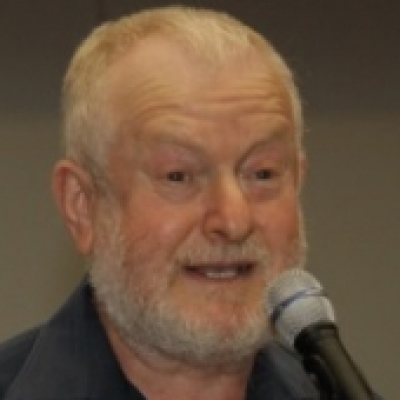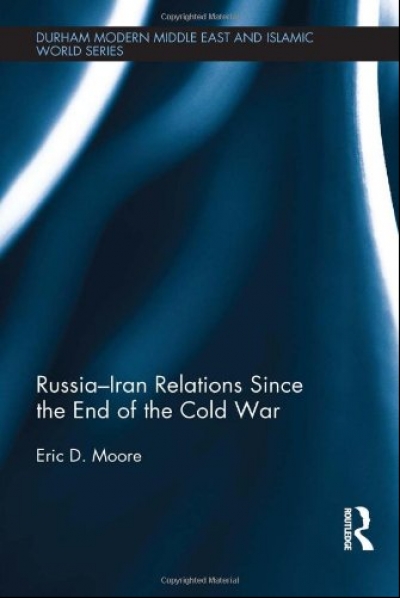



 Dmitry Shlapentokh
Dmitry Shlapentokh
Russian-Iranian relations form the backdrop of this review in which Western writers are found to lack understanding of other societies because they have little knowledge of local languages, culture or access to primary sources.
Dmitry Shlapentokh, associate professor at Indiana State University, South Bend, Indiana, reviews Russia-Iran Relations Since the End of the Cold War by Eric D. Moore (Routledge, 2014; 242 pp., $8.84 hbk).
Eric D. Moore, author of the book Russia-Iran Relations Since the End of the Cold War, deserves praise for choosing the subject. Books on Iran’s foreign policy are surprisingly rare despite the country’s great importance in the geopolitical arena. Even less is written about the Russian-Iranian foreign policy relationship. This book is clearly a positive development for it adds to the few works on the subject.
Moore clearly makes a good point when he elaborates on the dynamic aspects of Russo-Iranian relations. He also rightly relates the current Russo-Iranian friction with the gas/oil competition. Despite these positive aspects, the book has serious problems and in a way reflects the problems with Western, especially American, political science, whose practitioners often try to explain political phenomena in the context of structurally rigid, almost mathematical, paradigms while ignoring complex historical textualization of the process and conflicting trends.
The problem becomes even more acute when political scientists do not know much about the country(s) under study and the author does not know the language(s) of the country and, consequently, does not read or have access to primary sources. The book under review offers a good example of these kinds of problems.
Moore starts his analysis of the Soviet-Iranian relationship with the Treaty of 1921, which provided generous concessions to Iran by Russia (p. 101). At the same time, the historical context of the treaty was the emerging Soviet Union that was weak and isolated at the time. It was, therefore, anxious to deal with any power that recognized it. The relationship soured by 1935 when “after the expiration of validity of the Treaty of 1935,” the economic relationship between the USSR and Iran practically ceased, as the Iranian side refused to extend the treaty.
The reason, as the author should have noted, was the rise of strong Stalinist thought in the USSR and the new global geopolitical climate where emerging totalitarian states started to claim foreign lands. Tehran’s apprehension was quite justified as the Soviet Union, together with Great Britain, had occupied Iran in 1941 on the grounds of the latter’s collaboration with the Nazis. After the war, Britain withdrew its troops whereas Soviet troops remained. While noting this, the author fails to explain the context of the Soviet plans. Iran is a multi ethnic state with a considerable number of Azeris in the north of the country and Stalin tried to play the ethnic card in the same way as he had done in Eastern Poland with the Ukrainian/Belorussian majority.
Moore notes that the Shah reengaged Moscow in the 1960s and 1970s (p. 13) and relates these activities to Iran’s economic problems. However, he provides no explanation of how the economic problem was related to diplomatic reengagement. As a matter of fact, this rapprochement was primarily due to the Shah’s grand geo political stance. It is true that the last Shah was a solid American ally. Still, with his grand ambitions, he was very fond of the great Ahemenidian Empire — he wanted to play his own foreign policy and play, in a way, on the rivalry between the US and the USSR.
Dealing with the post-Soviet era, Moore notes that “the five year period between 1992 and 1996 represented one of the most dynamic periods in the Russian–Iranian relationship” (p. 19). This might be true. Still the author fails to explain the mutually exclusive and highly contradictory Russian steps. On the one hand, Moscow signed an agreement to provide Iran with weapons and almost simultaneously scrapped it. Moore fails to provide any explanation for this strange phenomenon. The explanation is not hard to find, provided the person has dealt with and has some familiarity with Boris Yeltsin’s Russia.
Moore states that Yeltsin’s major reason to be engaged with Iran was due to pressure from the nationalists and communists (p. 98). The assumption that communists and nationalists played any visible role in Yeltsin’s approach to Iran hardly holds ground. Iran played little role in their overall rhetoric against the regime. It is true that Prime Minister Yvegeny Primakov wanted to forge an alliance with Iran to counterbalance America’s influence (p. 108) but his term as prime minister was quite short. He took office at the very end of Yeltsin’s presidency and his influence on Russian foreign policy was limited.
The contradictory nature of Moscow’s relationship with Tehran was due to the Russian elite’s peculiar position. On the one hand, Russian industry and research facilities were in dire straits due to lack of funds. Tehran was one of the few customers for Russia’s weapons and hardware. This explains Moscow’s desire to engage with Iran. On the other hand, the Russian elite were anxious to be incorporated into the Western, mostly American centered, world order and tried to please Washington.
Besides the lack of concrete historical contextualization and explanation of events, there are also some factual errors in Moore’s book. This becomes clear when one looks at Moore’s narrative related to Iran-Russian relations in the Putin era. Moore states “that a reduction in the political capacity of the Kremlin opposition elite during the 2000s thus obviated the need for the Kremlin to pursue its concessionary line of politics that had been instrumental for cooperation with Tehran throughout the 1990s” (p. 116). Consequently, the Russo-Iranian relationship started to decline from 2002. According to him, “cooperation (began) vanishing” from 2002–2006 and from 2007–2010 was in a “state of decline.” Still the opposite happened. Russia’s agreement with the US not to send weapons to Iran was scrapped. Moreover it was in 2007 that Moscow signed the contract with Tehran to deliver the S-300 missiles. It irritated Washington considerably and this was what Moscow expected. And this desire to challenge the US using Iran as the bargaining chip was due to post-Soviet Russia’s transformation.
It is true that when Putin took office he promised Russia’s support in what was called “the war on terror” and even raised no objections to the US’ appearance in Central Asia, Russia’s backyard and imperial heirloom. Here Putin clearly, following the desires of the Russian elite, had no intention of confrontation with the US. Instead, he wanted collaboration. It is true that the Russian elite had no desire to confront the US in the beginning of the post-Soviet era when Russia was in the process of transition to a new economic/political order and the state was quite weak. Still by the time of the beginning of Putin’s tenure the process of transition was basically over. The Russian state became much stronger than it was during Yeltsin’s period and the Kremlin believed that Washington would accept Russia at least as a junior partner.
In order to demonstrate its goodwill, Moscow permitted the US to extend its influence in Central Asia. The Kremlin clearly expected reciprocity from Washington. It did not happen and the US invasion of Iraq (2003) made the relationship between Washington and Moscow much more tense. In 2007, Putin made a strong anti-American speech and in 2008 he engaged in war with Georgia, the latter being supported by Washington. It was not surprising that Iran had emerged as the bargaining chip and the agreement to deliver the S-300s was signed. Thus by 2007, the Russo-Iranian relationship was strengthened; it did not decline but problems in the relationship reemerged in 2010.
To sum up, the book is a good example of the problem with Western, especially American, political science. Their practitioners often try to place different cultures/societies in the Procrustean framework of abstract models. The problems become even more serious when they have little knowledge/understanding of societies outside of the US. In fact, the abstract dogmatization prevents them from understanding not only foreign societies but often their own as well. And thus, they are faced with unpleasant surprises, as the Donald Trump phenomenon shows so clearly.
